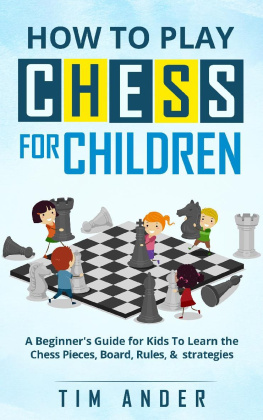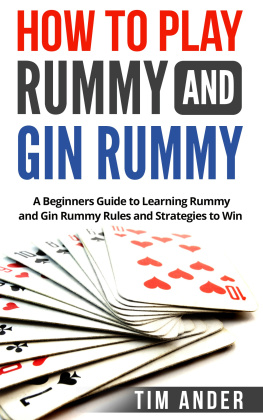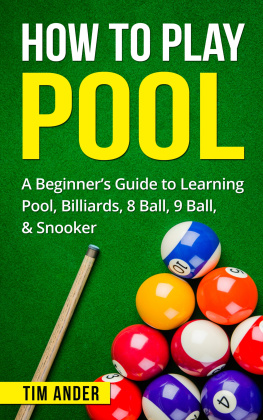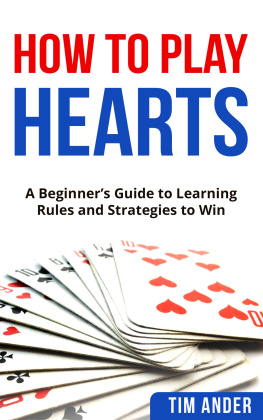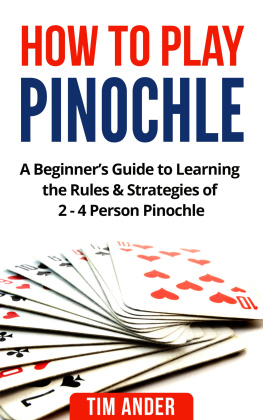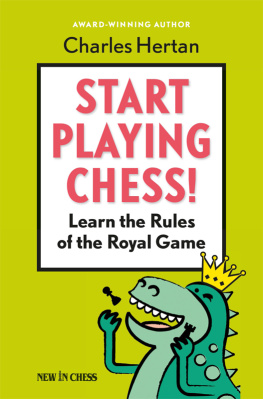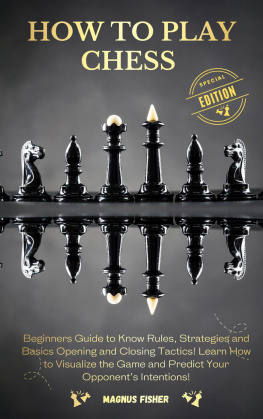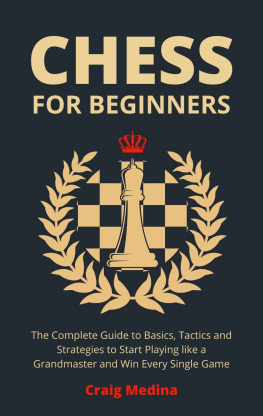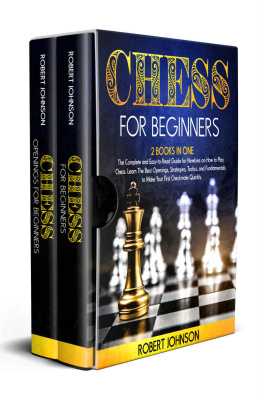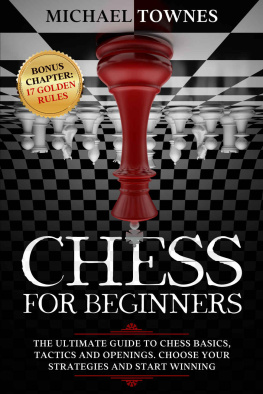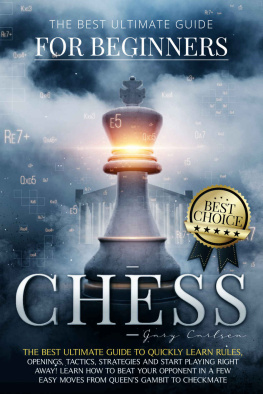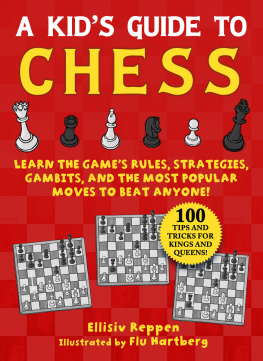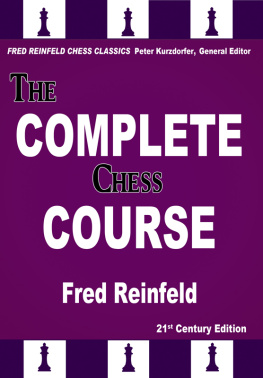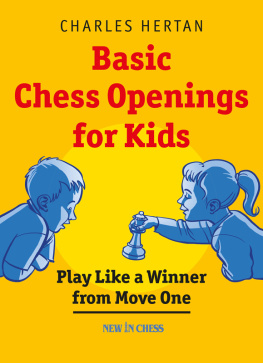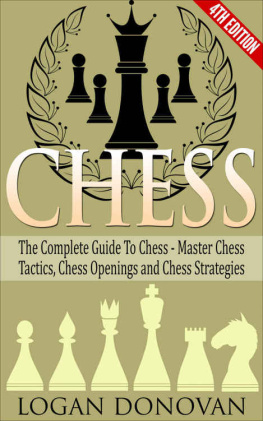TABLE OF CONTENTS
How to Play Chess for Children:
A Beginners Guide for Kids To Learn the Chess Pieces, Board, Rules, & Strategy
Table of Contents
Chapter 1:
Chapter 2:
Chapter 3:
Chapter 4:
Chapter 5:
Chapter 6:
Chapter 7:
Chapter 1
GAME OVERVIEW AND INTRODUCTION TO THE GAME
SO, YOU WANT TO LEARN how to play chess? Good for you! Chess is a fun and interesting game that you can enjoy for your whole life. Chess is also a very old game that people have played all over the world for almost 2,000 years!
To use this guide, it would help to have a chessboard in front of you. It doesnt have to be fancy, but it should have all of the pieces, which well talk about later. It can either be a physical board or on the computer, but it will be easiest for you to understand the directions if you can follow along on your own. There are pictures to help you, but some of the movements will make more sense if you get to do them yourself. It will help you learn if you can play with a friend or against a computer to practice all of the different moves and strategies. Its okay to just learn some of the steps and then practice those for a while until you are comfortable with them. Then, once youre ready to move on, you can try the next section!
To begin, you need two people and a chessboard. The two people play against each other. The goal of the game is to capture the King piece of your opponent, the person youre playing against. To capture the king, you have to attack him with other pieces. An attack on the king is called check. If you attack the king in such a way that he has no way to get out of it or avoid it, it is called checkmate, and the game is over. The king that is checkmated has lost.
In order to try and checkmate the king, you take turns moving your pieces one at a time. While you move, you can capture other, less important pieces, by landing on the same square as them and removing them from the board. The first thing you need to know in order to play is what the board looks like and how the pieces move.
Chapter 2
THE CHESS BOARD AND PIECES
A CHESSBOARD IS A SQUARE with lots of squares in two alternating colors. When the board is in front of you, the bottom left square should be the darker color and the bottom right square should be the lighter color. If this isnt how your board looks, turn it part way around until it is. This is the correct way for your board to face. Now if you put your finger on the bottom left square (it should be a dark one), you can trace a line to the other three corners. If you trace a line up to the top left square (a light one), this is called a file. There are 8 files going from your side to your opponents side. These are sometimes lettered from A to H (starting from the player with the light pieces side) so you can keep track of them. Now if you start back at the bottom left square (the dark one), you can trace your finger across the board to the bottom right square (a light one). This line is called a row (or rank). There are 8 rows going from one side to the other. These are sometimes marked with the numbers through (from left to right on the side of the white pieces) so you can keep track of them. Even if the letters and numbers are not written on your board, you can still imagine them there to describe where all of the pieces are.
This means that eight squares going across the board by eight squares going up and down the board make a total of 64 squares on the board. All 64 squares can be labeled by the letter of their row and the number of their file. Can you identify which square would be called A-1 on this board?
Good, now try H-4.
What about B-6?
M-14?
That ones a joke! There is no M-14 on a chessboard, only the letters A-H and the numbers 1-8.
Now put your finger back on the bottom left square (A-1) and trace a line going all the way to the top right square (H-8, a dark one). This kind of line is called a diagonal. The diagonal isnt just a line that goes from corner to corner, but any line that follows that same pattern. A diagonal line will always follow squares of the same color.
Now that you know what the board looks like, lets learn about the pieces. Both players start with 16 pieces, enough to fill up two rows each. Not all pieces are the same though, and each one starts in a specific place and can move a certain way.
The first kind of piece is called a Pawn. A pawn is the least important of the pieces, and so each player starts out with 8 of them. The pawns all start in a line one row away from the end of the board. This means that all of the light pawns are lined up on row 2 and all of the dark pawns are lined up on row 7.
The next kind of piece is called a Rook. Rooks usually look like some type of castle or tower. Each player gets two rooks and they go in the two corners on each players side of the board. That means the light rooks go on A-1 and A-8, and the dark ones go on H-8 and H-1.
The next two pieces are the Knights. Knights are shown by a horses head and they start off just to the inside of the rooks. That means the light rooks are on A-2 and A-7, and the dark ones are on H-7 and H-2.
Next inside the knights are the Bishops. The bishop usually looks like a curvy statue with some kind of point at the top. Sometimes it looks similar to the pawns, but is larger, and often it has a diagonally slice through the top of it. The two light bishops sit on A-3 and A-6, and the dark ones sit on H-6 and H-3.
The last two pieces are the King and Queen. The King is the most important piece in the game and the Queen is the most powerful. The Queen always sits on her color, so the lighter queen sits on A-4 because it is also light colored, and the darker one sits on H-4 because it is dark colored. Finally, the light king sits in the remaining open spot, A-5, and the dark king sits in the remaining open spot on his side, H-5. This means that the two queens are facing each other on the same file, and so are the kings on their file.
If youve set up your chessboard correctly and the pieces are well made, the king and queen should be the tallest pieces on the board, with each piece getting shorter on either side. This is a good way to check if you have the order right.

